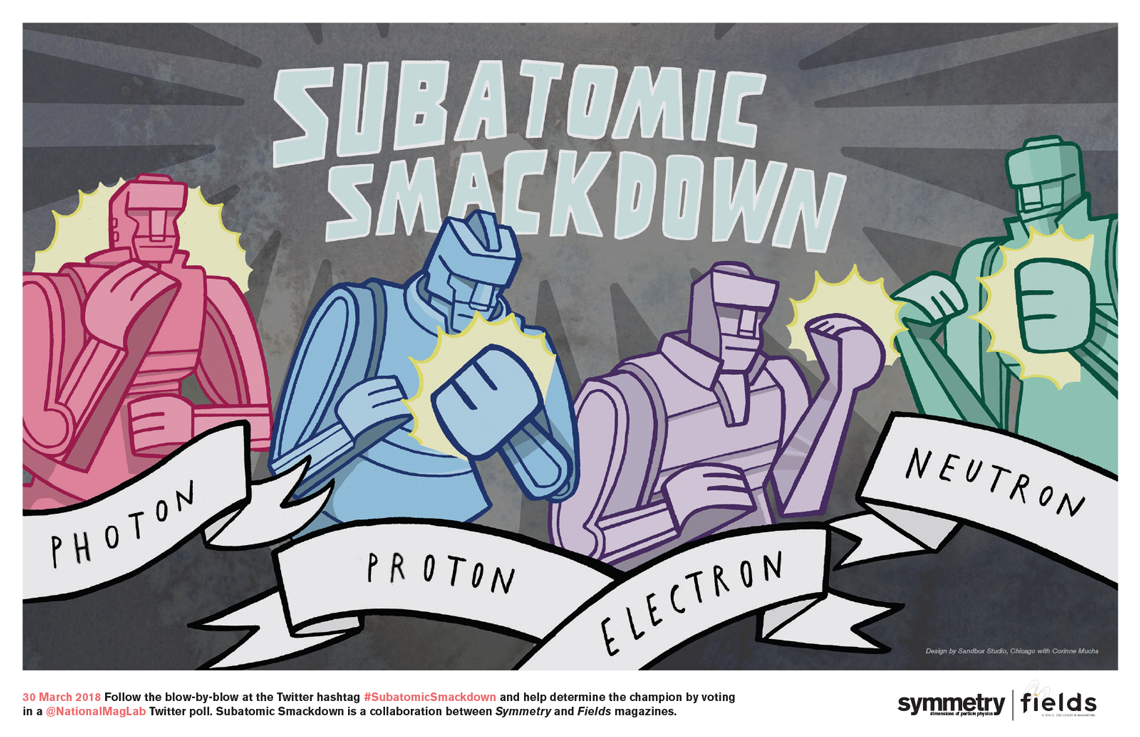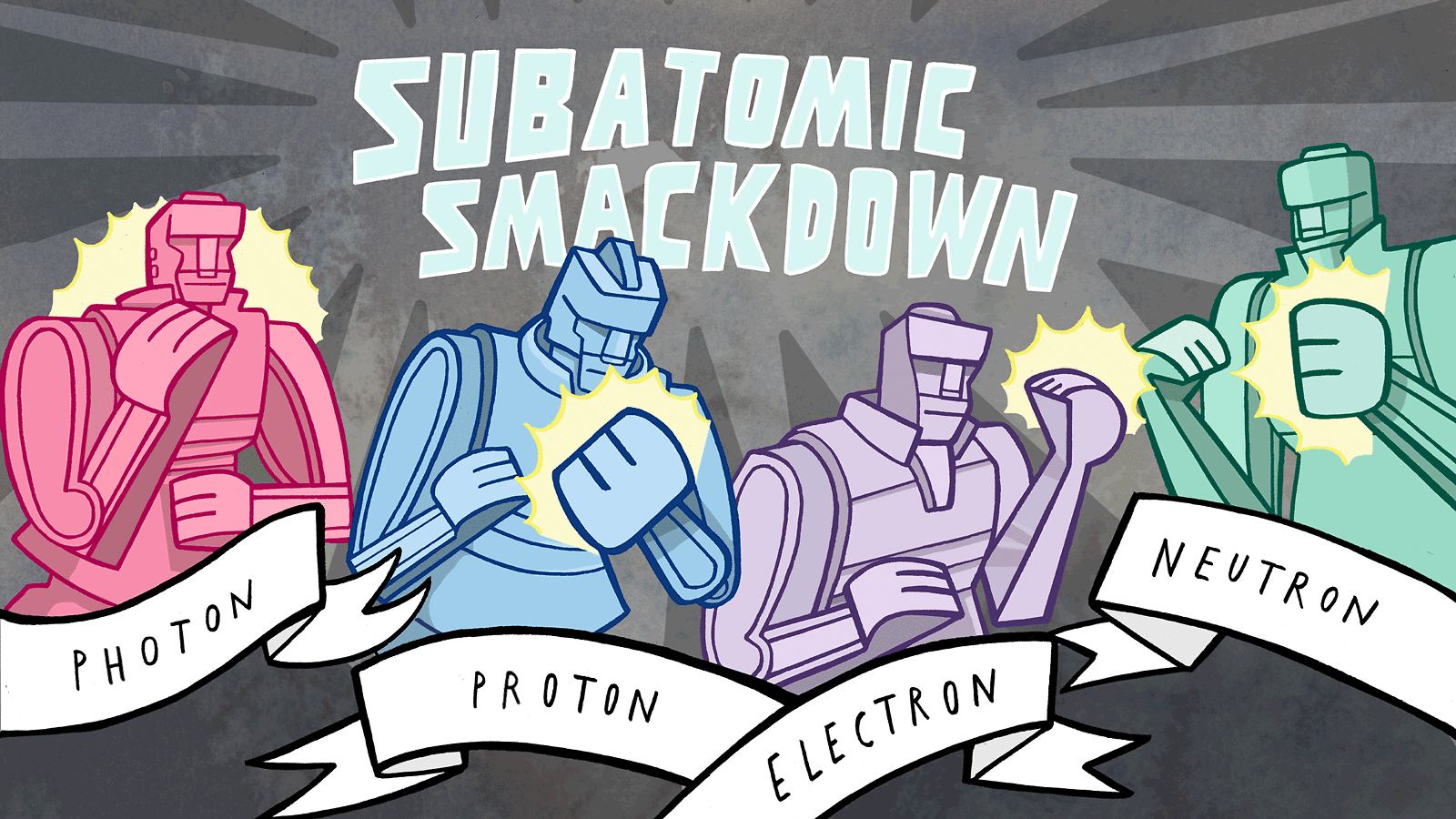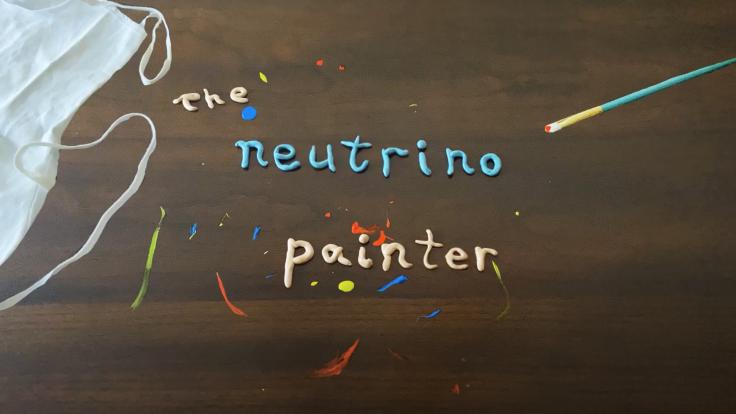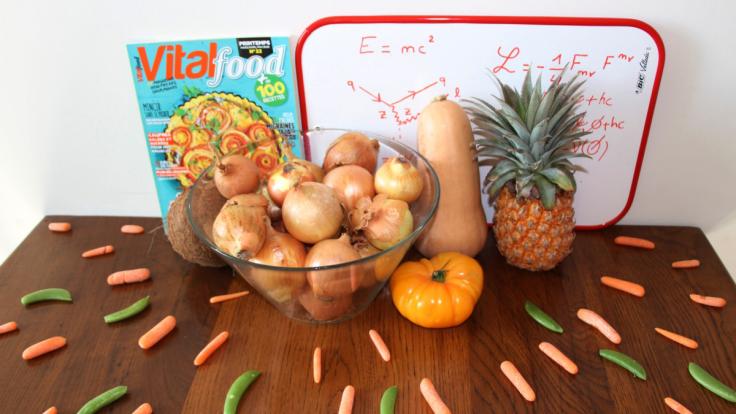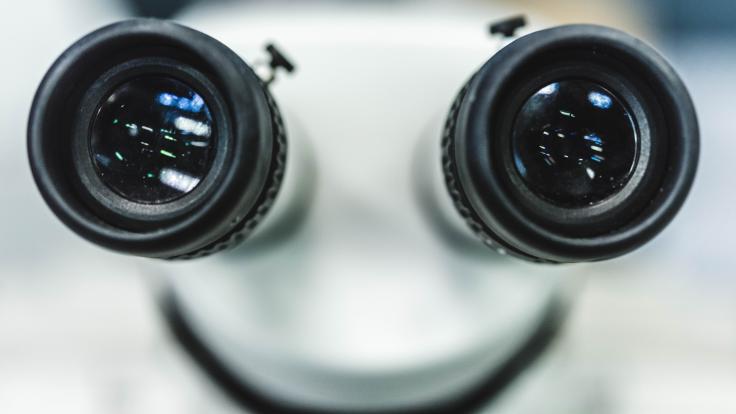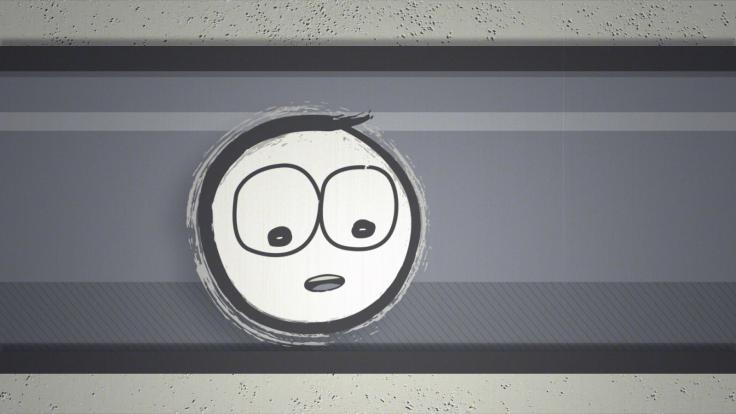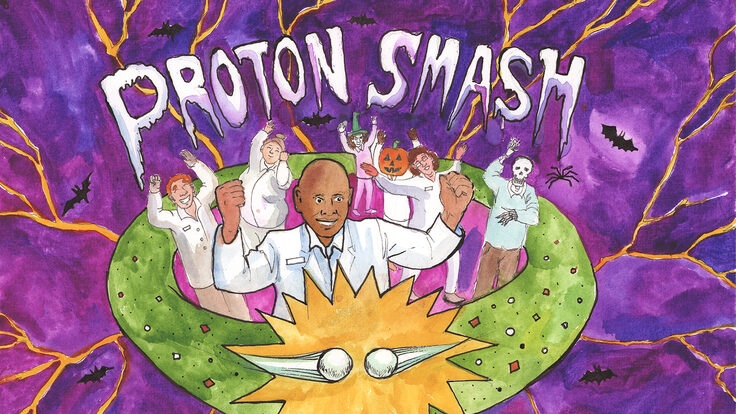Physics fans, are you ready to rumble?
Of course you are — and you’ve come to the right place. In the text that follows, you will have a ringside seat to perhaps the most anticipated skirmish in science history, as four atomic adversaries duke it out for the coveted title of Most Awesome Subatomic Particle of the Millennium.
More rousing than the Rumble in the Jungle, more chilling than the Thrilla in Manila, we present to you, ladies and gentlemen, the (drumroll, please) Subatomic Smackdown.
There will be no messy blood, sweat or other bodily fluids involved in this brainy battle. This is a war of words, ideas and wit based in science, from which one, and only one, of these four deserving combatants will emerge as victor. Introducing:
In the blue corner, championed by CERN (the European Organization for Nuclear Research) near Geneva, Switzerland, and weighing in at 938.27231 megaelectronvolts (MeV), is the proton.
In the red corner, supported by SLAC National Accelerator Laboratory in Menlo Park, California, USA, and weighing in at—well, nothing, really—is the photon.
In the purple corner, championed by the National High Magnetic Field Laboratory in Tallahassee, Florida, USA, and weighing in at 0.51099906 MeV, is the electron.
Finally, in the green corner, rooted on by the Institute for Quantum Matter at Johns Hopkins University in Baltimore, Maryland, USA, and weighing in at 939.56563 MeV, is the neutron.
This epic physics feud will take place over four rounds, as each challenger (with a little help from their supporters) will argue why it, and it alone, deserves to hold the title of Most Awesome Subatomic Particle.
So … electronvolt for electronvolt, which particle packs the most impressive punch? Read on, award points as you go, then weigh in on who you believe emerges as champion of this quantum quarrel.
Round 1: The Proton
Pay heed to this smashing subatomic celebrity, used in medicine and to produce neutrinos, antiprotons and, of course, the God particle.
Step aside, lightweights. The proton has arrived. And I’m positive that I’m the very best.
You may have heard of me. Ever seen a model of an atom? Right there in the middle of everything: protons.
Fighter Stats
- Weight: 938.27231 MeV
- Symbol: p+
- Year discovered: 1911
- Charge: positive
Yes, there are also neutrons in the nucleus. But they’re lucky just to be there, aren’t they? Look up any element's atomic number and you'll see which particles really count for something. Protons are the best, and scientists know it. After all, my name comes from the Greek word for “first.” Electrons? They’re fighting just to be in our orbit.
What else? Those hadrons in the Large Hadron Collider (LHC) at CERN? Protons, of course.
I don’t like to brag, but do you know about the Higgs boson? The “God particle”? The last undiscovered piece in the Standard Model of particle physics, the one scientists spent five decades trying to find? Do you know who finally discovered that particle?
Protons did. When LHC scientists crashed us together, we made so many of those bosons that scientists couldn’t help but see them. There’s a reason they built a 17-mile accelerator — spanning two countries! — just for us.
The takeaway here? Protons make an impact.
So maybe I don’t zip around the LHC at exactly the speed of light. I do get pretty close, and besides who would want to? I am a particle of substance. I have mass.
Unlike you photons and electrons, I’m not just some simple, point-like particle. I have an inner self, full of quarks and gluons. The force that holds them all together? The strong nuclear force — which, by the way, is almost 140 times as strong as the electromagnetic force (sorry not sorry, electrons).
Unlike some of you, I can stand up for myself. Push me and I’ll push back, converting energy into brand new gluons and virtual particles. I’m not some clumsy electron, speeding around just as fast as you please.
What I am is creative — not to mention multitalented. Higgs bosons aren’t the only particles I can make. Need some neutrons? Some neutrinos? How about anti-protons or rare isotopes? Protons can make any of those: Just point us toward the right target.
You might think I’d get tired of being so amazing. You might think that, like some neutron, I’d eventually wear out, give up and come apart. But I am rock solid. As far as scientists know, I will never decay. And if I do, I’ll still probably last longer than every planet, star and galaxy around.
In sum, protons are collections of quarks and gluons, held together by the strong force, possibly for eternity. You can find them in everything built of atoms, and they’re key players in both medicine and basic research. In sum, protons are the best.
Written with the assistance of Kathryn Jepsen
Round 2: The Photon
Lighter than a butterfly, faster than a bee (by far) — no other particle can compete with me!
Fighter Stats
- Weight: massless
- Symbol: ϒ
- Year discovered: 1923
- Charge: none
I go 186,000 miles
a second,1 faster than you can go,
I reckon.
I’m massless,2 in fact:
your weight holds you back.
Got my attosecond attitude,3
while gravity’s got you subdued.
I’m everywhere, nowhere;4
there’s no place
you can go where
I can’t be —
I’m the original
of particle-wave duality.5
I am all colors,
shedding light.
You can’t hide from me.
From big to ultrasmall,
don’t you know I reveal it all?
I’ll show you what the deal is:
photosynthesis6 and double helix.
With X-rays you can see inside,
deflect off atoms while I glide.
I’m coherent;7
I’m transparent;
admit it,
I’m the heir apparent.
Fast-moving fire atom,8
transmitting your datum,9
telecommunication, wifi,
bouncing through the
night sky,
13 billion miles10
from Voyager’s eye,
I fly.
See me in the sci-fi —
I destroyed Alderaan11
then in the real world
I grew the grass on your12
lawn.
I come from the sun at
half a hellawatt;13
forget about it, your words
mean naught.
Your matter is trash,
time to scatter fast.
Which particle is best?
No contest.
Written with the assistance of Karl Gumerlock, Amanda Solliday and Alan Fry
- The speed of light is 299,792,458 meters (about 186,000 miles) per second. Nothing moves faster.
- Theory and experiments agree that photons have energy and momentum, but no mass.
- The fastest controlled laser pulses occur in just attoseconds, or billionths of a billionth of a second.
- Cosmic microwave background radiation, a form of light from the Big Bang, permeates our universe.
- Light seems to behave like a wave sometimes and a particle other times.
- X-ray imaging experiments have provided important clues to how life works, from DNA to photosynthesis.
- Light is coherent when its waves travel in fixed relationships. This is a property of lasers.
- In ancient Hindu physics, light rays were made of fire atoms called tejas.
- Examples of telecommunication that rely on photons: radiofrequency wireless signals, microwaves and fiber optics.
- NASA uses light to communicate with space missions billion of miles away through huge radio antennas on Earth and in space.
- In Star Wars, a laser from the Death Star destroys the peaceful planet.
- Photons drive photosynthesis and the atmospheric warming that influences Earth’s weather and climate.
- The solar energy output is about 0.4 x 1027 watts, an order of magnitude referred to unofficially as “hella.”
Round 3: The Electron
It might look like wizardry, but racking up a shelf of Nobel Prizes is all skill, ingenuity and inherent greatness.
It goes without saying that the electron is the greatest subatomic particle, but I’ll take the time to explain why to those confused individuals who would suggest otherwise. Although our greatness is 100 percent established by science, we do see how some might become so awestruck as to suspect that hocus-pocus is somehow involved.
Fighter Stats
- Weight: 0.51099906 MeV
- Symbol: e-, β-
- Year discovered: 1897
- Charge: negative
First out of our bag of tricks: If you are reading this on a computer or cell phone screen, you are welcome. If you want to forward this to a friend or loved one — and I hope you do — feel free to use email. And what do you think the “e” stands for, anyway? Without me, you’d be swiping on a touchscreen or banging on a keyboard to do what? Generate neutrons, protons or photons? I don’t think so.
Oh sure, the internet uses photons to transmit information, but it gets the information from electrons and it converts the information back to electrons before it arrives at its destination.
And if you are sitting down, you are also welcome. Because without the electronic bond, you’d fall right through your chair to the floor … and then through the floor … and so on. All the way down — now there’s a disappearing act!
In fact, I’m so important to everyday life that I was the first elementary particle to be discovered by scientists, a feat performed by J.J. Thomson in 1897 for which he received the Nobel Prize. In 1911, we electrons paired up at low temperatures to perform our superconductivity dance for Heike Kamerlingh Onnes. We zipped so fast through that mercury: Now you see us, now you don’t! Another Nobel Prize. It took scientists 46 years to explain that dance, thanks to our deep understanding and clever use of quantum mechanics.
Then in 1986, in a very thin layer of copper and oxygen atoms, we performed our superconductivity dance at temperatures far exceeding anything previously known. We bagged more Nobel Prizes for that discovery (Hmmmm … that name seems to keep popping up like a rabbit out of a hat!). And even though engineers are already using high-temperature superconductivity in new magnets and other technologies, physicists still haven't discovered how we do it!
That’s the thing. We electrons are genius magicians, always coming up with new tricks to amaze. But we’re also genius entrepreneurs … always providing new technologies to benefit humanity. Your other subatomic particles neither amaze nor innovate, playing the vaudeville circuit while our name is in lights on Broadway.
These days, my greatest tricks occur when I get together with quadrillions of my fellow electrons and — presto chango! — invent new collective behaviors, or electronic correlations, as scientists call them. Think of birds flocking, fish swimming in schools or other beautiful and powerful group behaviors that you’d never see or appreciate if you only studied animals as individuals. Those abilities, combined with the fact that we electrons are completely indistinguishable from each other, means that we do amazing things that still baffle scientists.
In one recent acclaimed performance, we were traveling in a material so thin we were constrained to two dimensions. Then, when scientists put us in a high magnetic field, we electrons danced around in circles and got together with the magnetic flux quanta to create new particles that — abracadabra — had only one-third of the electric charge of an electron! To put that in terms you in the classical world might understand, that’s like using a giant pile of bricks to build a wee house the size of a third of a brick.
This fractional quantum Hall effect is one of our favorite tricks. It netted us electrons more Nobel prizes and rewrote the physics textbooks to focus on topology, which should sound familiar because it landed a Nobel in 2016 — are you sensing a trend here?
Alone as individuals, together in superconducting pairs or working in countless correlated confabulations, we electrons are the best magicians and the brightest inventors of all the subatomic particles. And that is no illusion. Electron out. Mic drop.
Written with the assistance of Greg Boebinger
Round 4: The Neutron
We’re neutral, not unbiased: Revealing science secrets as we scatter, neutrons are worth our weight in the gold we create.
There really can be no disputing the superior, indeed noble stature of the neutron. I make the ultimate sacrifice in the name of science (more on that in a bit) and am the undisputed heavyweight of the subatomic world. Massless, a photon clearly lacks gravitas, while the electron, I am sorry to say, is a complete lightweight. And despite the proton’s boasts of heft, I have outweighed it for 13.8 billion years.
Fighter Stats
- Weight: 939.56563 MeV
- Symbol: n0
- Year discovered: 1932
- Charge: none
You should thank your lucky neutron stars, dear reader, for our excess mass. If neutrons were lighter than protons, then we would be the stable particles, and protons could decay into us! Hydrogen would be unstable and unable to fuel the stars, which created the carbon within you. So if we didn’t outweigh protons, you would not even be here!
I overcame a rough start. Because neutrons can only survive about 15 minutes alone (after that, regrettably, we turn into an electron, a proton and a neutrino through radioactive beta decay), just one in seven of us survived the Big Bang, by sticking to protons and forming helium-4. Indeed, without neutrons, everything would be hydrogen, the only atom that can live without us.
We neutrons coexist even at the astronomical scale. Neutron stars are made up almost exclusively of us. Why should you care? Look no farther than your golden ring: We made it, and all heavy elements, in violent neutron star collisions.
Free of electric charge, we eluded scientists longer than photons, electrons and protons. The neutrons produced by bombarding beryllium with helium-4 were initially mistaken for photons. So sad! Refined experiments by James Chadwick in 1932, however, led him to recognize that he had discovered either the neutron or the violation of energy and momentum conservation. Needless to say, it was I!
Since then, our brilliance has grown by leaps and bounds. Thanks to fancy inventions like high flux fission reactors and the spallation neutron source at Oak Ridge National Laboratory, scientists can free us from our nuclear dwellings to form neutron beams, which help them see atoms dance and electrons spin. True: X-rays are handy for figuring out the atomic structure of materials. But neutrons find things that escape even them, including tiny hydrogen atoms, even those hiding among heavy atoms! Our penetrating power gives scientists “neutron vision” to see water in an operating fuel cell, oil in an operating engine, and problems in your smartphone battery that does not hold its charge.
When a beam of us hits our target, we scatter like bouncy balls to reveal in amazing detail the good vibrations (phonons) inside. And because we spin, we feel magnetism. So when a scientist puts a material inside a powerful magnetic field and aims a beam of us at it, we divulge its magnetic secrets. We can even create and annihilate those crazy emergent particles that electrons are always waxing poetic about.
So, there you have it: We are the secret nuclear ingredient to overcoming repulsive protons; we alone form heavenly bodies that create gold mines; and when we are liberated through fission or spallation, we offer scientists an unsurpassed view of mischievous electrons and of atoms large and small. But the view comes at a price: As we are detected, we suffer the indignity of turning into lowly protons and electrons! Consider the nobility of this final act as you lock in your vote for me, objectively the best subatomic particle (n0 contest).
Written with the assistance of Collin Broholm
So … who wins the Subatomic Smackdown?
We’re moving the final round out of the ring and into the social sphere. Which particles will go down for the count and which one will take the prize? You decide.
On March 30, follow the blow-by-blow on Twitter at #SubatomicSmackdown and join a corner to support your favorite particle. But remember: We want a good clean fight, so let’s keep those tweets above the belt, everyone.
Tally your points and submit your scorecard on Smackdown Day via a Twitter poll hosted by @NationalMagLab. The champion will be selected by majority decision.
Check out our printable poster for the Subatomic Smackdown.
Editor's Note: Subatomic Smackdown is a co-production of Symmetry magazine and fields magazine, a publication about high magnetic field research produced at the National High Magnetic Field Laboratory.
